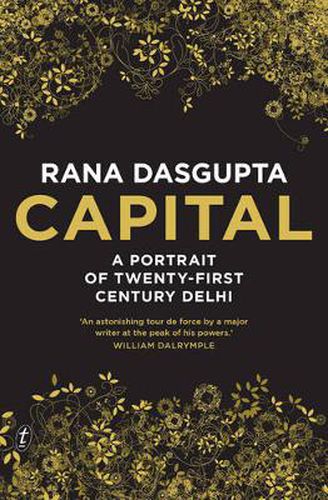Readings Newsletter
Become a Readings Member to make your shopping experience even easier.
Sign in or sign up for free!
You’re not far away from qualifying for FREE standard shipping within Australia
You’ve qualified for FREE standard shipping within Australia
The cart is loading…






At the turn of the twenty-first century acclaimed novelist Rana Dasgupta arrived in the Indian capital with a single suitcase. He had no intention of staying for long. But the city beguiled him-he ‘fell in love and in hate with it’-and, fourteen years later, Delhi has become his home.
Capital tells the story of Delhi’s journey from walled city to world city. It is a story of extreme wealth and power, of land grabs and a cityscape changed almost beyond recognition. Everything that was slow, intimate and idiosyncratic has become fast, vast and generic; every aspect of life has been affected-for the poor, the middle classes and the super-rich.
Through a series of fascinating personal encounters Dasgupta takes us inside the intoxicating, sometimes terrifying transformation of India’s fastest-growing megacity, offering an astonishing ‘report from the global future’.
$9.00 standard shipping within Australia
FREE standard shipping within Australia for orders over $100.00
Express & International shipping calculated at checkout
Stock availability can be subject to change without notice. We recommend calling the shop or contacting our online team to check availability of low stock items. Please see our Shopping Online page for more details.
At the turn of the twenty-first century acclaimed novelist Rana Dasgupta arrived in the Indian capital with a single suitcase. He had no intention of staying for long. But the city beguiled him-he ‘fell in love and in hate with it’-and, fourteen years later, Delhi has become his home.
Capital tells the story of Delhi’s journey from walled city to world city. It is a story of extreme wealth and power, of land grabs and a cityscape changed almost beyond recognition. Everything that was slow, intimate and idiosyncratic has become fast, vast and generic; every aspect of life has been affected-for the poor, the middle classes and the super-rich.
Through a series of fascinating personal encounters Dasgupta takes us inside the intoxicating, sometimes terrifying transformation of India’s fastest-growing megacity, offering an astonishing ‘report from the global future’.
After two well-received books of fiction – the collection of short stories, Tokyo Cancelled, and his Commonwealth prize-winning novel Solo – Capital is Rana Dasgupta’s first book of non-fiction. Capital is the story of Delhi, its eventful history, its complex politics, its rapid and chaotic modern development, and above all, its diverse inhabitants. It is this last element that makes this book truly wonderful, for while Dasgupta writes compellingly about the physical city of Delhi, it is his uncovering and dissecting of the Delhi-dweller’s psyche that is especially engaging and insightful.
Much has been written about the history of Delhi, going back as it does over many centuries. It has changed names and shape and rulers a number of times and these changes have been well-documented. Dasgupta covers a lot of the same ground, but he also masterfully employs anecdotal history, skilfully setting the personal against the past, to add depth and interest to his story of the capital. He talks to Delhiites from various, often completely contrary, backgrounds and he is at his best when portraying the changing roles of men and women in modern Delhi.
In a chapter on the corrupt practices in Indian private hospitals, Dasgupta quotes a doctor who is talking about victims of property wars whose bodies end up in the Hindon River. The bodies are fished out by locals looking to make some money, and sold to a dental college that needs cadavers for its students to practise their skills – for the doctor, it’s ‘an appropriate image for Indian medicine today. Taking the chaos of our society and turning it into profit’.
In a sense, throughout Capital, Dasgupta shows us how, after the tumultuous biography of Delhi, turning chaos into profit is an essential skill in the lives of its modern-day citizens.
Kabita Dhara is a freelance reviewer.